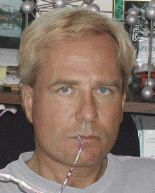Structural Biology
The Structural Biology Group conducts independent FWF funded research and provides collaborative support in structural determination and computational modelling throughout the campus.
Lead
Team
About
The Structural Biology Group (SBG) at GENEPI conducts independent FWF funded research and provides collaborative support in structural determination and computational modelling throughout the I-MED campus. Our primary experimental methods for macromolecular structure determination are X-ray crystallography and cryo electron microscopy, supported by computational modelling and bioinformatic in-silico analysis. We cover the entire range of recombinant protein production including molecular cloning, protein expression in multiple host systems, purification, crystallisation, grid preparation, and data collection.
Ongoing Projects
Biosynthesis of halucinogenic substances
Among the best-known natural products, the potent hallucinogen psilocybin represents the principal metabolite of mushrooms of the genus Psilocybe, the so-called magic mushrooms. After ingestion the stable precursor and prodrug psilocybin becomes de-phosphorylated into its active form, psilocin (4-hydroxy-N,N-dimethyltryptamine), the actual psychotropic agent. Psilocin interferes with human neurotransmission as it binds agonistically to 5-hydroxytryptamine (5-HT)2A and to 5-HT1A receptors. From a medical perspective, psilocybin has been recognized in clinical trials as an effective antidepressant with proven pharmaceutical relevance in the treatment of existential anxiety of advanced-stage cancer patients and against therapy-resistant depression.
The intricate biosynthesis of psilicybin was only discovered in 2017 by our international collaboration partner, Dirk Hoffmeister in Jena. Psilocype mushrooms uses five highly specific enzymes (TrpB, PsiD, PsiH, PsiK, and PsiM) to step-wise synthesize psilocybin starting from a simple amino acid, serine, and the heterocyclic aromatic compound indole to make the amino acid tryptophan, from which in a series of 4 four more steps, psilocybin is synthesized.
Understanding the molecular mechanism of these enzymes is relevant for biocatalytic natural substance synthesis, design of novel substituted tryptamines with modified therapeutic profiles, and design of stereospecific enzymes.
Cooperations
- Psilocybin biosyntesis: Dirk Hoffmeister, University Jena, Germany
- SARS-Cov-2 3CLPro viral protease inhibitors: Emmanuel Heilmann and Dorothee von Laer, Institute of Virologie, I-MED
- Mitochondrial respiratory complex I proteins in prostate tumors: Helmut Klocker, Department of Urology, I-MED
- TLR3-dependent calcification: Johannes Holfeld, University Clinic of Cardiac Surgery, I-MED
- Neurofibromin structure: Andreas Naschberger, KAUST, Kingdom of Saudi Arabia

